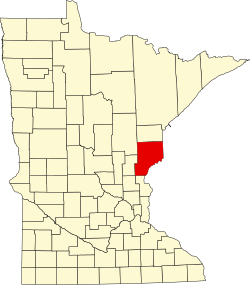2010 census
As of the census [11] of 2010, there were 2,849 people, 602 households, and 362 families living in the city. The population density was 541.6 inhabitants per square mile (209.1/km2). There were 652 housing units at an average density of 124.0 per square mile (47.9/km2). The racial makeup of the city was 71.5% White, 15.5% African American, 5.7% Native American, 0.6% Asian, 0.1% Pacific Islander, 3.6% from other races, and 2.9% from two or more races. Hispanic or Latino of any race were 11.0% of the population.
There were 602 households, of which 36.5% had children under the age of 18 living with them, 31.9% were married couples living together, 21.3% had a female householder with no husband present, 7.0% had a male householder with no wife present, and 39.9% were non-families. 33.2% of all households were made up of individuals, and 17.8% had someone living alone who was 65 years of age or older. The average household size was 2.42 and the average family size was 2.94.
The median age in the city was 34.9 years. 14.6% of residents were under the age of 18; 9.2% were between the ages of 18 and 24; 46.1% were from 25 to 44; 20.2% were from 45 to 64; and 9.8% were 65 years of age or older. The gender makeup of the city was 71.0% male and 29.0% female.
2000 census
As of the census [5] of 2000, there were 1,549 people, 580 households, and 359 families living in the city. The population density was 292.5 inhabitants per square mile (112.9/km2). There were 634 housing units at an average density of 119.7 per square mile (46.2/km2). The racial makeup of the city was 94.84% White, 0.39% African American, 3.55% Native American, 0.32% Asian, 0.06% Pacific Islander, 0.39% from other races, and 0.45% from two or more races. Hispanic or Latino of any race were 1.42% of the population.
There were 580 households, out of which 30.3% had children under the age of 18 living with them, 44.5% were married couples living together, 13.4% had a female householder with no husband present, and 38.1% were non-families. 32.1% of all households were made up of individuals, and 16.4% had someone living alone who was 65 years of age or older. The average household size was 2.41 and the average family size was 3.03.
In the city, the population was spread out, with 24.9% under the age of 18, 8.0% from 18 to 24, 25.7% from 25 to 44, 17.4% from 45 to 64, and 24.0% who were 65 years of age or older. The median age was 38 years. For every 100 females, there were 79.1 males. For every 100 females age 18 and over, there were 73.6 males.
The median income for a household in the city was $40,265, and the median income for a family was $43,684. Males had a median income of $32,500 versus $21,181 for females. The per capita income for the city was $18,053. About 11.6% of families and 16.7% of the population were below the poverty line, including 24.4% of those under age 18 and 13.9% of those age 65 or over.




